You are using an out of date browser. It may not display this or other websites correctly.
You should upgrade or use an alternative browser.
You should upgrade or use an alternative browser.
Grumman F-14 Tomcat
- Thread starter overscan (PaulMM)
- Start date
njiiaf
ACCESS: Confidential
- Joined
- 6 December 2021
- Messages
- 127
- Reaction score
- 380
- Joined
- 21 May 2006
- Messages
- 3,003
- Reaction score
- 2,288
Has anyone got any information in relation to the proposed F-14C variant?
What constituted the difference in F-14C, compared to the F-14A?
All that I can find is that it was suppose to be powered by General Electric F101DFE engines.....
Regards
Pioneer
What constituted the difference in F-14C, compared to the F-14A?
All that I can find is that it was suppose to be powered by General Electric F101DFE engines.....
Regards
Pioneer
- Joined
- 27 December 2005
- Messages
- 17,768
- Reaction score
- 26,582
Initially, F-14A was the initial variant with TF30 engines, the planned F-14B added F401 engines, and the slightly hazier F-14C would have more advanced avionics. The designation might have been reused for other proposals though.
apparition13
I really should change my personal text
- Joined
- 27 January 2017
- Messages
- 605
- Reaction score
- 1,106
The answer is in this post in the F-14 projects thread:Has anyone got any information in relation to the proposed F-14C variant?
What constituted the difference in F-14C, compared to the F-14A?
All that I can find is that it was suppose to be powered by General Electric F101DFE engines.....
Regards
Pioneer
The details are in the linked transcripts.
Roughly speaking, the original plan was for the F-14A to have the capability it had plus attack capability equal to an A-7. The attack capability got deleted. The F-14B was an A with F401 engines. There were only suppost to be 70 some A models, with the rest of the original run being B models.
The C was a future upgrade with a phased array radar, though what kind of phased array is deleted in the transcript. It would also have full all-weather attack capability, but from the transcript it isn't clear if that was by intent or simply a function of the new radar having the potential to do that so they would include it.
The flow is basically A, A with new engines is the B, B with new phased array radar is the C. In terms of capability it would be A, B would have improved dogfighting capability along with range and loiter times due to the new engine over the A, C would have improved beyond visual range capability due to the new radar along with all weather ground attack capability due to the new radar over the B.
F.L.
ACCESS: Top Secret
Does anyone have images of the Iranian F-14s escorting Putin and the four Su-35s during the journey to UAE ?
Last edited:
Does anyone have images of the Iranian F-14s escorting Putin and the four Su-35s during the journey to UAE ?

Iranian F-14 Tomcat Escorted Putin's Il-96 And Accompanying Flankers On Their Way To UAE
At least one IRIAF (Islamic Republic of Iran Air Force) F-14 Tomcat flew alongside the Russian presidential aircraft and its Su-35S Flanker escort over
Forest Green
ACCESS: Above Top Secret
- Joined
- 11 June 2019
- Messages
- 9,579
- Reaction score
- 17,672
njiiaf
ACCESS: Confidential
- Joined
- 6 December 2021
- Messages
- 127
- Reaction score
- 380
I don't know the validity of this information but in this recent interview, F-14 Ace Fereydoon "Ferry" Ali-Mazandarani claims that 10 AIM-54C were clandestinely delivered to Iran during Iran-Contra in 1986. The transfer was allegedly facilitated by Albert Hakim, an Iranian-Jewish businessman. The Iranians were not told these were AIM-54Cs specifically, rather that they were 'new built Phoenixes'. The interview is linked below in Farsi (mentioned around 34 min mark).
View: https://www.youtube.com/watch?v=tMfqd8U-TC0&t=2143s
- Joined
- 16 April 2008
- Messages
- 9,624
- Reaction score
- 14,561
I'm skeptical. At least in 1983, Iran was specifically not interested in either Phoenix or Harpoon, being focused on TOW and Hawk.
None of the six known, recorded transfers involved Phoenix. I think Phoenix would have been harder to hide, since the usual cover was transfers to Israel*, and Israel had no Phoenix.
* Sometimes Israel provided the arms to Iran and was backfilled from the US, sometimes the weapons went direct but the "story" was that they were for Israel.
None of the six known, recorded transfers involved Phoenix. I think Phoenix would have been harder to hide, since the usual cover was transfers to Israel*, and Israel had no Phoenix.
* Sometimes Israel provided the arms to Iran and was backfilled from the US, sometimes the weapons went direct but the "story" was that they were for Israel.

Iran’s F-14A Tomcat era ends with the arrival of new Russian Su-35SE fighters
Iran’s F-14A Tomcat era ends with the arrival of new Russian Su-35SE fighters
I just stumbled across this 1974 film about the F-14:
Opening: A man climbs into a plane. A man climbs into a jet. A plane with a propeller takes off. A jet takes off. The back of the jet has flames shooting out of it as it takes off into the sky08-1:46). A bi-plane takes off. A bi-plane flies in the sky. A bi-plane with a gun turret for the flier is used. An aircraft battle in 1917. Bi-plane performs a trick in the sky. Two all metal planes: ME-109 and Spitfire. They fly fast in the sky. POV from the cockpit of an ME-109. A Spitfire turns quickly (1:47-4:32). U.S. fighters: P-38, P-47 and P-51. P-51 flies in the sky. Japanese flew lightweight Zero planes. A Zero flies quick. Hellcats and Corsairs were USA planes as well. Russians developed new planes. F-86s, Russian Mig-15s fly. MIG-17, Mig-19, Mig-21s were all made by the Soviets. U.S. planes used sparrow missiles during the Vietnam war. Missiles are fired (4:33-8:24). U.S. soldiers in a control room. F-4 Phantom jet lands on a battleship. A F-4 lands and is directed where to go. U.S. Fighter pilots walk towards their planes. A man enters the cockpit, puts on his helmet (8:25-10:07). A jet takes off. A pilot in an F-8 vs two pilots in an F-4. F-4 has better radar. F-8 inside the cockpit. The planes engage in pursuing one another. POV footage of both planes as seen from the cockpits (10:08-13:02). Behind the plane is shown from both planes, the F-4 and F-8. The planes go upside down and rightside up and back again. The F-8 comes in for a landing (13:03-15:14). Captain Scott Lamoreaux speaks to the viewer about Soviet aircraft threats. A Russian jet is shown. The 'Foxbat' is another Russian jet. A Russian plane drops a cruise missile. A Russian boat fires a missile as well (15:15-17:39). Pilots discuss over a beer. Commander Pete Carroll speaks on American fighter shortcomings. Commander Sam Leeds then speaks. Commander 'Tooter' Teague also speaks (17:40-19:18). Animation sequence of a cat going to the beach. A bear throws an airplane at the cat and it flies around annoying him as he tries to read the newspaper. He grabs it. The bear cries and his father confronts the cat who hands the plane back. The papa bear then grabs the cat, makes him into a ball, and whacks him with a hammer. The cat soars through the air and meets a dog police officer. The cat reads a book about becoming a good fighter. The cat boxes a punching bag with boxing gloves. he then goes back and punches the bear who puts him in a garbage can. The cat reads the same book and lifts weights. He rushes to the beach and punches the father bear but the kid bear hits the cat with a hammer (19:19-21:50). In the same book, the cat reads and then seats vegetables. He heads to the beach, its foggy, he can't see and the papa bear kicks him into the water where he's punched by an octopus. The cat looks at a picture of a bikini clad bear female. He then heads to the beach, hits the father bear, whacks the kid bear on his behind. His father grabs the cat and the kid bear closes the screen tighter and makes it smaller into a slingshot, the father launches the cat through some homes. Another lesson in the book and the cat punches a bunch of punching bags. The kid bear winds his airplane and throws it, the cat runs to the beach an punches both bears. The plane hits him in the eye and gives him a blackeye. Another lesson and the cat does every exercise. He goes to the beach, punches the two bears, more bears show up, he takes them out, and then he puts up an RIP tombstone with a number count (21:51-24:08). The cat gets a diploma and is celebrated. The symbol of the Tomcat. The Grumman F-14 Tomcat is an American supersonic, twin-engine, two-seat, twin-tail, variable-sweep wing fighter aircraft. It was the first such U.S. jet fighter with twin tails. The F-14 takes off into the sky.The plane does a flip in the air. Commander Jim Taylor and Fred Winton speak on the plane. Flying shots of the F-14 flying and moving. Cockpit radar (24:09-27:59). Commander John Thuente speaks on the F-14. F-14 radar. The plane flies. A pilot turns around and looks behind him due to space inside. An F-14 takes off into the sky. F-14 flies upside down. Row of F-14s (28:00-30:48). Commander Tom Cassidy speaks on the F-14. The F-14 on the runway, it races down and takes off (30:49-33:37). No end credits.
apparition13
I really should change my personal text
- Joined
- 27 January 2017
- Messages
- 605
- Reaction score
- 1,106
Regarding the bit that is bolded, how would the F-14 have benefited from being two feet (or perhaps four feet, I think I've seen that said as well) longer?Couple of thoughts, although we are getting away from the Boeing 360.
When JVX was first mooted, no one guessed that Cheney would cancel it and Clinton would delay it. So, said vehicle was designed to operate from existing platforms. Since there were provisions in the design for the other services (including the stillborne Army version), you ended up with a heavier vehicle than you would have had for pure HXM, and on a lighter aircraft you could have smaller proprotors. However, although JVX was heftier, it still had to meet the Marines' requirement for shipboard compatibility. You see this in other multi-service aircraft: F-35, CH-53, F-111 (ooooo, bad example), etc. The F-14 would have benefitted from being two feet longer, but that would have an impact on how many you could park and move on the flight and hangar decks.
isayyo2
Lurker alert
- Joined
- 24 November 2011
- Messages
- 1,132
- Reaction score
- 2,334
This post be of interest to you: https://www.secretprojects.co.uk/threads/f-14-tomcat-projects.589/page-8#post-594553Regarding the bit that is bolded, how would the F-14 have benefited from being two feet (or perhaps four feet, I think I've seen that said as well) longer?
Navy Sets F-14 Reengining Schedule
Washington—The Navy is planning to begin reengining production Grumman F-14 air-superiority fighters with the General Electric F101 DFE derivative fighter engine in Fiscal 1987 and is considering extending the Tomcat's fuselage with a 30-in. plug to increase fuel capacity.
The 30-in. fuselage plug would permit another 2,000 lb. of fuel to be added to the 19,600 lb. usually carried by the F-14. The plug, according to Navy officers, may actually improve the aerodynamic performance of the aircraft, “but the tactical advantage is the real boost, permitting loiter on combat air patrols for another 22-25 min. with two AIM-7FS, two AIM-9s and two Phoenix missiles.”
With the F-14 As in the fleet it takes approximately 4,400 lb. of fuel per hour on station and requires approximately 2,500 lb. of fuel from takeoff to the edge of the inner defense zone—about 75 naut. mi.—and another 2,000 lb. to the battle group’s outer defense zone—150-225 naut. mi.
Last edited:
Colonial-Marine
UAVs are now friend, drones are the real enemy.
- Joined
- 5 October 2009
- Messages
- 1,477
- Reaction score
- 1,336
I had not been aware of this idea before. Where would the fuselage plug likely have been added? I would assume you'd want to avoid increasing the distance between the variable sweep wing and the tail surfaces.
Forest Green
ACCESS: Above Top Secret
- Joined
- 11 June 2019
- Messages
- 9,579
- Reaction score
- 17,672

Iranian F-14 Tomcat Encounter At An Airshow Unlike Any Other
A single F-14 took center stage at an airshow on the island of Kish, in the Persian Gulf, as the Tomcat's days in Iranian service likely numbered. A single F-14 Tomcat took center stage at an airshow quite unlike any other, on the Iranian island of Kish, in the Persian Gulf.
Periscope Films released this 1970s F-14 video concerning ACM in the F-14:
Produced by Northrop Corporation, “Splash One” (1979) is a short, color commercial film that takes the viewer on site to Naval Air Station (NAS) Oceana to observe trainees enrolled in the Fleet Fighter Air Combat Maneuvering (ACM) Readiness Program. The film includes various practice maneuvers between Grumman F-14 Tomcats, Northrop F-5E, and Douglas A-4E Skyhawk jets.
Film opens, group of Navy pilots in uniform seen walking out onto tarmac towards group of Grumman F-14 Tomcats; Various close-ups of men as they get into jets and discuss their combat experience/ experiences with the F-14 (0:08). POV from inside cockpit of aerial F-14, aerial view as rockets pierce ocean below and cause big splash (0:46). Title page (0:55). Member of United States Navy delivers lecture to room of cadets on Fleet Fighter ACM Readiness Program (0:59). Simulation of threat in combat situation using Northrop F-5E and Douglas A-4E Skyhawk jets (1:15). Radar used in real time to track presence of enemy jets, deployment of weapons (1:50). Commander of VF-43 (U.S. Navy fighter squadron) at NAS Oceana disembarks from jet, narrates segment (2:08). Segment showing classroom instruction received by trainees in the VF-43 squadron (2:31). Interview with instructor, explains lesson on 1v1 maneuvers (3:17). Another lecture talks about a 4v4 scenario (four F-14s v. two F-5s and two A-4s) and strategic tactics (3:50). Close-up view of trainees as they change into pilot uniforms in locker room and walk out onto tarmac; Montage quick shots of various personnel that hand them equipment, fuel jets, inspect mechanics (5:46). The F-14s drive along tarmac and take off one-by-one followed by two F-5s and two A-4s (6:44). View of airborne F-14 jets in four finger formation; Discussion over radio narrates scene (7:26). Back in classroom setting, class analyses the flight on radar and sees F-5 attacking F-14, assess their strategy and improvement for next mission (8:44). Montage close-up shots of the different trainees, personal anecdotes about their experience in the training program (9:53). Frame freezes on trainee inspecting wing of jet, “Northrop” text appears (10:12).
Manuducati
ACCESS: Secret
- Joined
- 25 November 2020
- Messages
- 336
- Reaction score
- 1,072
Found on Facebook.
"PMTC F-14 lab"
 www.facebook.com
www.facebook.com




"PMTC F-14 lab"
Log into Facebook
Log into Facebook to start sharing and connecting with your friends, family, and people you know.
 www.facebook.com
www.facebook.com
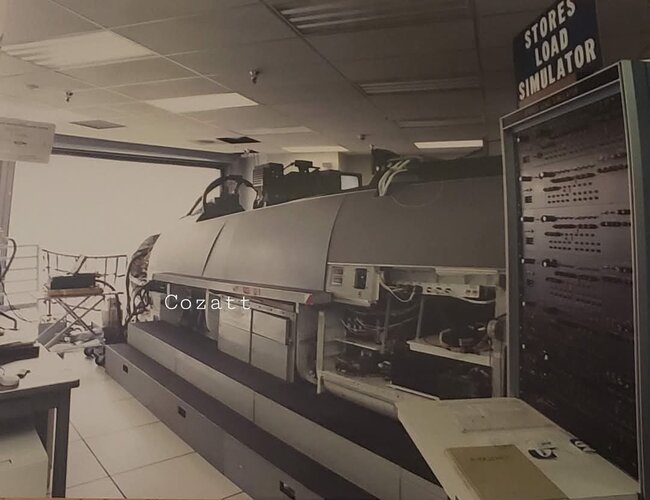
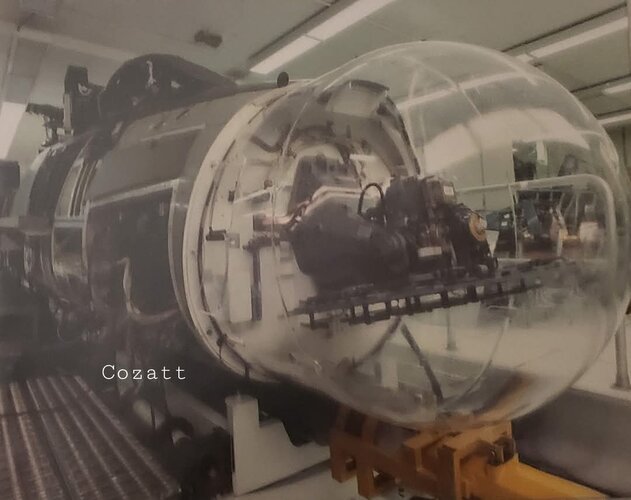
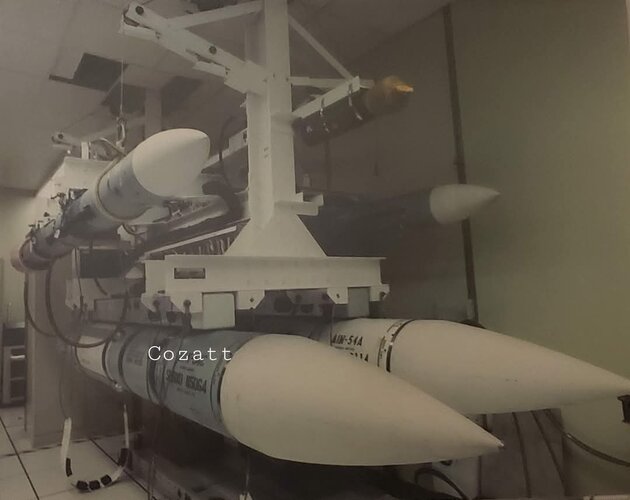
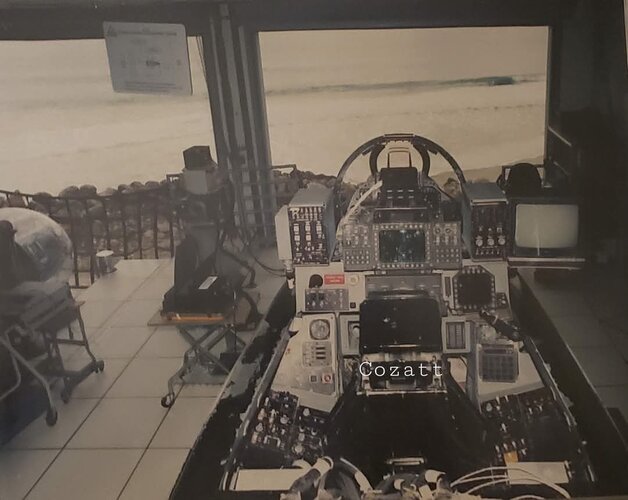
Manuducati
ACCESS: Secret
- Joined
- 25 November 2020
- Messages
- 336
- Reaction score
- 1,072
Not sure if shared here before (that dates back to March 2023): IRIAF F-14 simulator. IF true to the operationnal IRIAF F-14s, there are some visible upgrades. Note that the pilot and RIO simulators are separated.
Link: https://iranpress.com/iran-army-unveils-f-14-simulator
Link: https://iranpress.com/iran-army-unveils-f-14-simulator
Attachments
-
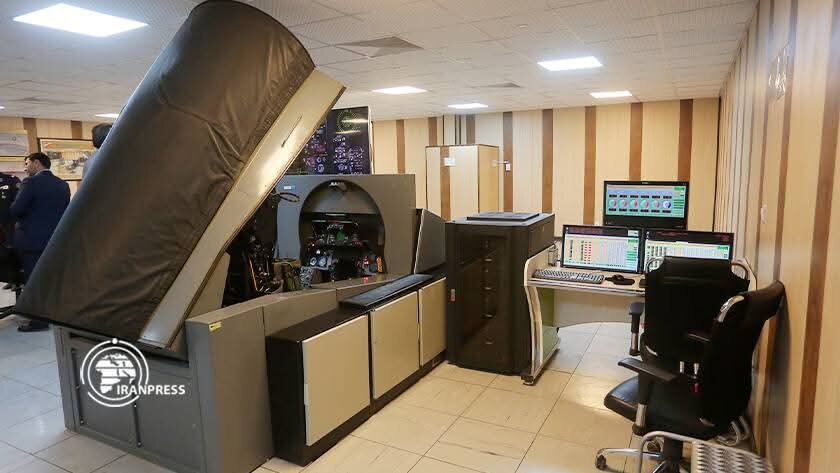 FB_IMG_1740587052395.jpg44.2 KB · Views: 26
FB_IMG_1740587052395.jpg44.2 KB · Views: 26 -
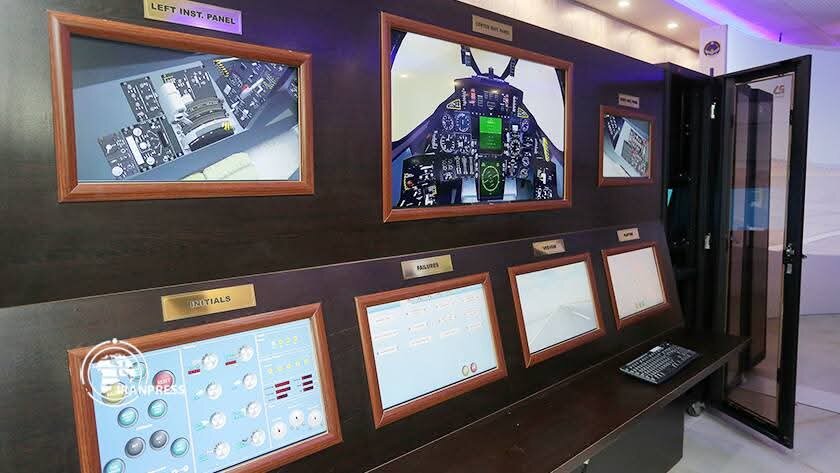 FB_IMG_1740587048964.jpg50.7 KB · Views: 26
FB_IMG_1740587048964.jpg50.7 KB · Views: 26 -
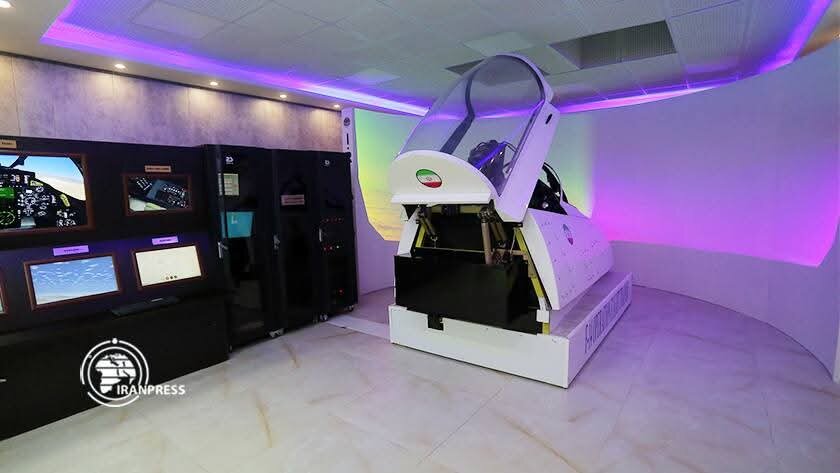 FB_IMG_1740587046586.jpg33.3 KB · Views: 29
FB_IMG_1740587046586.jpg33.3 KB · Views: 29 -
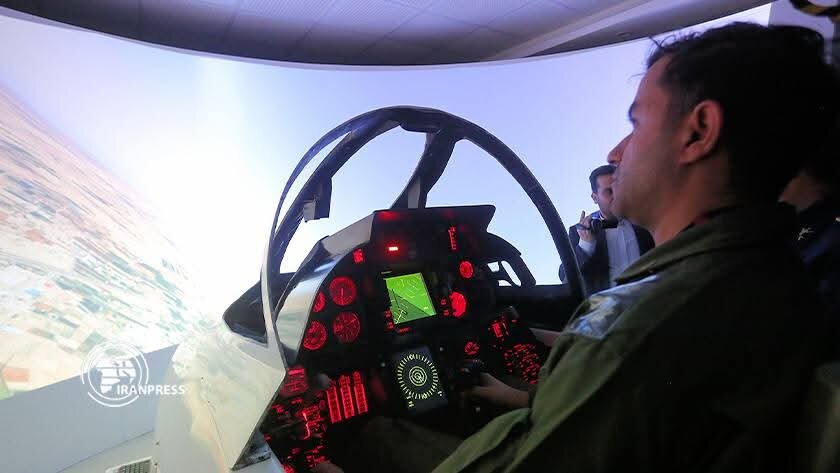 FB_IMG_1740587035380.jpg34.3 KB · Views: 30
FB_IMG_1740587035380.jpg34.3 KB · Views: 30 -
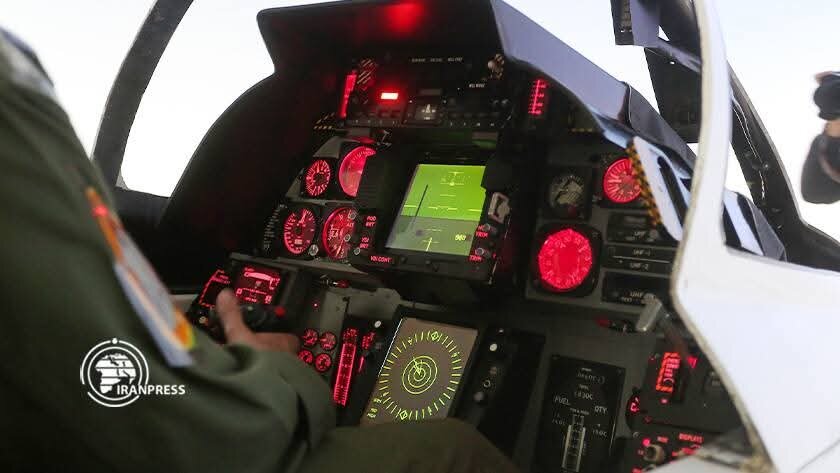 FB_IMG_1740587039350.jpg37.2 KB · Views: 30
FB_IMG_1740587039350.jpg37.2 KB · Views: 30 -
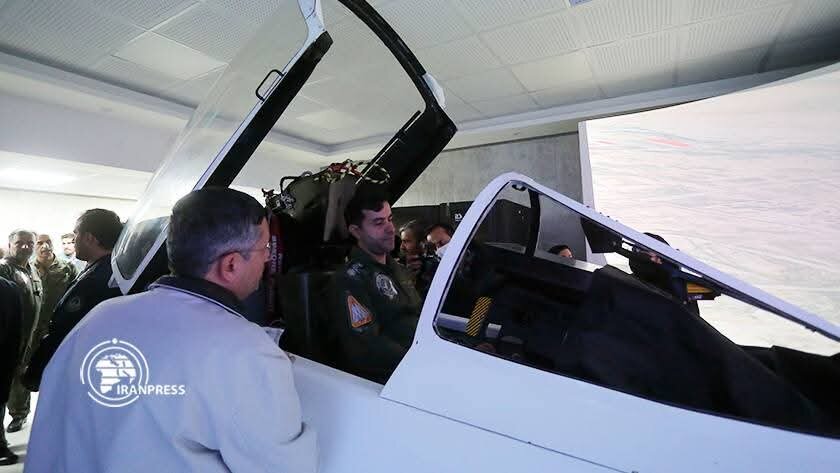 FB_IMG_1740587041674.jpg36.5 KB · Views: 29
FB_IMG_1740587041674.jpg36.5 KB · Views: 29 -
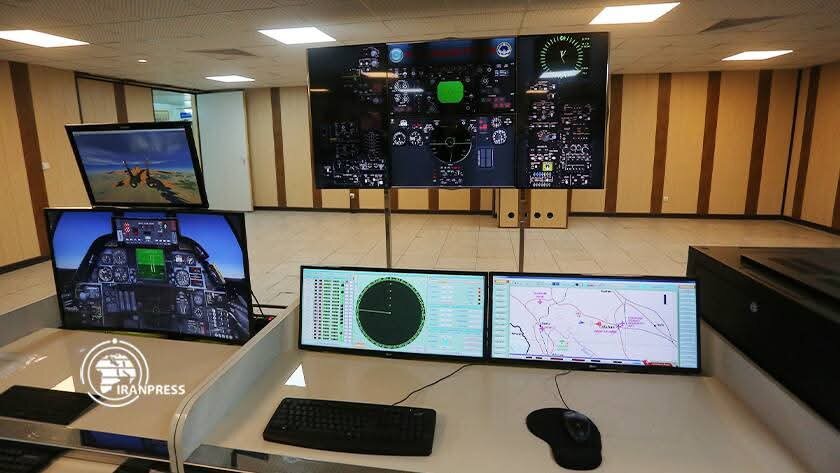 FB_IMG_1740587055751.jpg49.8 KB · Views: 26
FB_IMG_1740587055751.jpg49.8 KB · Views: 26
Two Iranian F-14 Tomcats were scrambled to intercept an American MQ-4C 'Triton' drone near Iranian airspace, forcing the drone to alter course
Cyberspec News
—❗️/ BREAKING: Two Iranian F-14 Tomcats were scrambled to intercept an American MQ-4C 'Triton' drone near Iranian airspace, forcing the drone to alter course The drone was flying dangerously close to Iran's sovereign airspace near the coastal city of Bushehr, and was forced to return to base...
Scott Kenny
ACCESS: USAP
- Joined
- 15 May 2023
- Messages
- 11,737
- Reaction score
- 14,521
Given the timeline, almost certainly a PESA.The answer is in this post in the F-14 projects thread:
The details are in the linked transcripts.
Roughly speaking, the original plan was for the F-14A to have the capability it had plus attack capability equal to an A-7. The attack capability got deleted. The F-14B was an A with F401 engines. There were only suppost to be 70 some A models, with the rest of the original run being B models.
The C was a future upgrade with a phased array radar, though what kind of phased array is deleted in the transcript. It would also have full all-weather attack capability, but from the transcript it isn't clear if that was by intent or simply a function of the new radar having the potential to do that so they would include it.
Given the timeline, almost certainly a PESA.
A scaled down version of the B-1B's AN/APQ-164 PESA?
Scott Kenny
ACCESS: USAP
- Joined
- 15 May 2023
- Messages
- 11,737
- Reaction score
- 14,521
More likely a predecessor to the F-15E's APG-70, for the A2G part of things.A scaled down version of the B-1B's AN/APQ-164 PESA?
Similar threads
-
-
-
-
F-18A/B/C/D Hornet Flight Manual (A1-F18AC-NFM-000)
- Started by overscan (PaulMM)
- Replies: 2
-
